Subsonic .22LR ammunition – what’s the best type for your rifle?
Six types of .22LR rimfire subsonic ammunition from varying manufacturers are tested to ascertain accuracy and stopping power at normal…
Win CENS ProFlex DX5 earplugs worth £1,149 – enter here
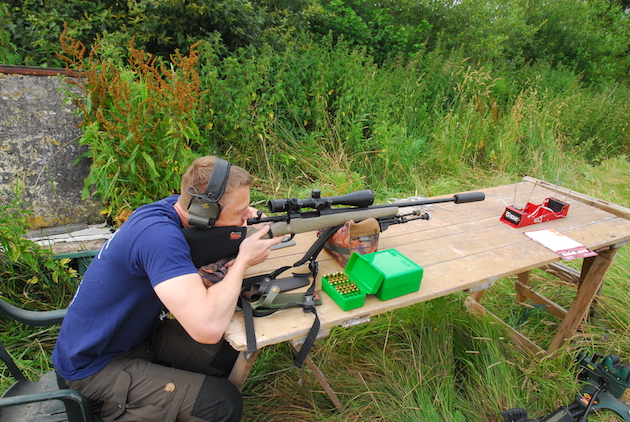 Olly checks that everything is lined up to his satisfaction before taking a shot with his .204 Nosler M48. This features a Vortex Viper ?scope and a Jet-Z moderator. Although we normally shoot off the concrete block in the background, it wasn?t long enough to site the chronograph on this occasion, so we set everything up on a wooden table instead.
Olly checks that everything is lined up to his satisfaction before taking a shot with his .204 Nosler M48. This features a Vortex Viper ?scope and a Jet-Z moderator. Although we normally shoot off the concrete block in the background, it wasn?t long enough to site the chronograph on this occasion, so we set everything up on a wooden table instead.
Q: I am after a cheap way of measuring the velocity of my .22 subsonic CZ rimfire so I can work out its trajectory. Is the new FX Chronograph any good? I use a lot of different chronographs to measure my rifle’s muzzle velocity.
A: The new FX model is powered by three AAA batteries. It uses wireless technology to communicate to a smartphone via Bluetooth. You download an app, which then allows velocity, muzzle energy, shot strings and more data to be collected. It also has an audible voice read-out for each shot fired. The FX Chronograph is compact, made of lightweight polymer and attaches to the barrel via a rubber band. It sends out a radar signal that measures the velocity, which means it can be used in all weathers, as well as during the day or night or on an indoor range. It is simple to use, accurate and means you don’t have to set up tripods and shoot between light screens, as you did with chronographs of old. It is limited to 1,300fps velocity but well worth the money in my view.
(Read our tried and tested list of the best chronographs.)
Every one of us wants to be able to produce nice tight groupings when we shoot.
My friend Olly, a keen fox shooter and deer stalker, wanted to know what effects changing a number of features of his rifle ammunition would have. These included the type and amount of powder, the bullet’s weight and ballistic characteristics, and the overall cartridge length for both his .308 Sauer 202 and his Nosler M48 in .204.
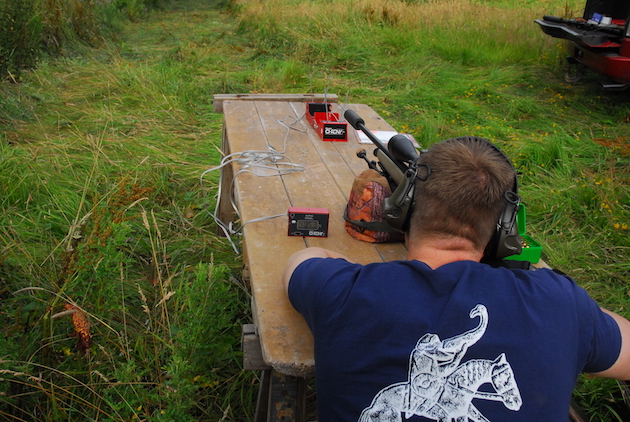
Each bullet passes between the sensor arms and the magic box calculates its velocity – the speed (in fps) is displayed on the digital readout by Olly’s left elbow
The basic set-up was something that anyone with access to a suitable piece of land could achieve — in this case, it was the range on my mate Paul’s farm. The zeroing area is a measured 100 yards and although we normally shoot off a one-ton concrete block, Olly wanted to use a chronograph to measure the bullet velocities.
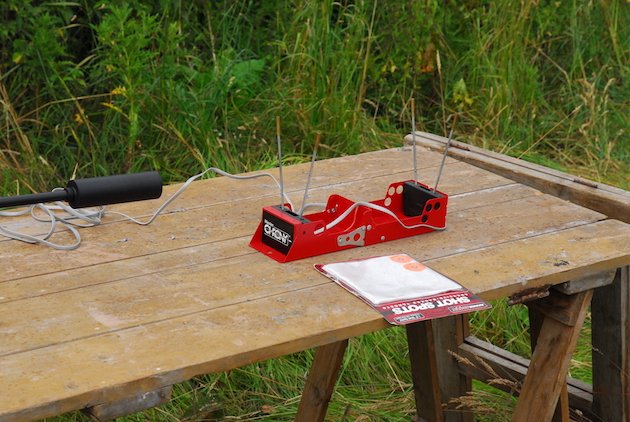
The Chrony Alpha chronograph showing how the front and rear sensor arms are arrayed
As this needs to be a few feet from the muzzle, it wouldn’t fit on the short platform we had. To get around this, we set up a wooden table instead. The Chrony Alpha was placed such that the bullet would pass between its antenna-like sensors and the speed displayed on a digital readout.
To minimise the effects of heat on the groupings, Olly fired five times from one rifle, then moved across to the other one before switching back again. After each shot, he checked the velocity, with each value being recorded on his phone. This allowed him to look back over the load configurations and draw sensible conclusions.
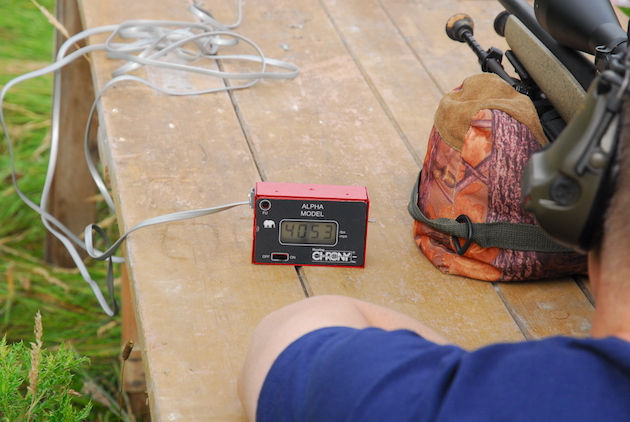
The readout showing that the last bullet Olly fired from his Norma .204 was travelling at 4,053 fps
The reason for using a different powder was that EU regulations have prohibited the import of any varieties containing certain chemicals. Sadly, this includes many popular ones such as the excellent Hodgdon BL-C(2), which is we have both used until now.
Six types of .22LR rimfire subsonic ammunition from varying manufacturers are tested to ascertain accuracy and stopping power at normal…
What’s the best rifle for foxing? How should you choose?
Deer stalking. I have just been on a rifle handling course and the instructor said that I should fire at…
Having spent a lot of time doing his research, Olly concluded that CFE 223, also manufactured by Hodgdon, was a candidate replacement.
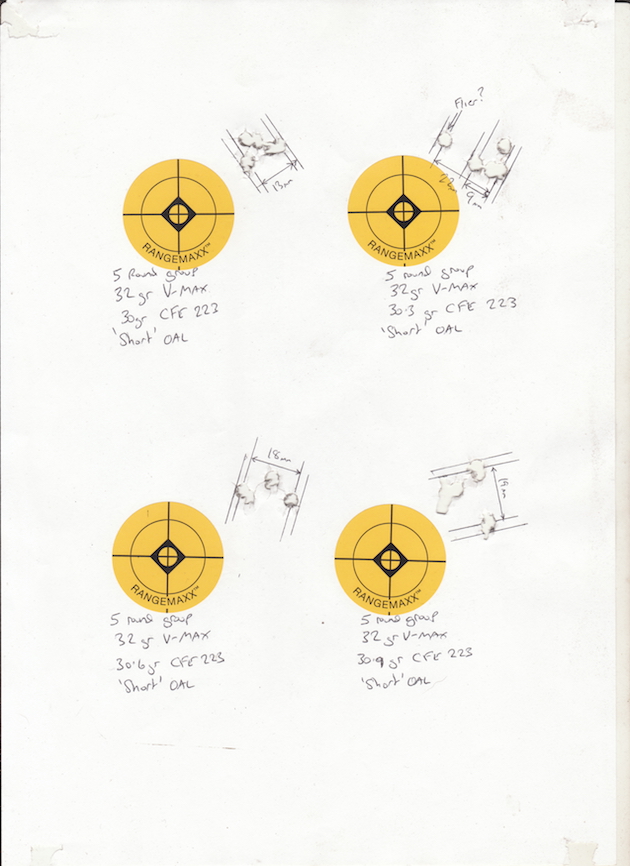
Target cards, annotated with the relevant details; as can be seen, all these were all 5-round groupings using 32 grain Hornady V-Max polymer-tipped ballistic bullets and Hodgdon CFE 223 powder.
Both 32 grain and 39 grain bullets were tested in the .204 — unfortunately, he’d previously discovered that when the rounds were loaded to their optimum performance, they were too long to fit in the magazine. As a result, he’d had to seat the bullet further into the case than he would have liked.
It should be made clear that this was only the first step in Olly’s load development, but it was an important one as it showed that Hodgdon CFE 223 clearly works well, and that further development is worthwhile. Speeds averaged over 3,800 feet per second for the 39 grain bullets, and more than 4,000 feet per second for the 32 grain bullets. I was certainly impressed.
Get the latest news delivered direct to your door
Discover the ultimate companion for field sports enthusiasts with Shooting Times & Country Magazine, the UK’s leading weekly publication that has been at the forefront of shooting culture since 1882. Subscribers gain access to expert tips, comprehensive gear reviews, seasonal advice and a vibrant community of like-minded shooters.
Save on shop price when you subscribe with weekly issues featuring in-depth articles on gundog training, exclusive member offers and access to the digital back issue library. A Shooting Times & Country subscription is more than a magazine, don’t just read about the countryside; immerse yourself in its most authoritative and engaging publication.

